Seville is one of the must-see destinations in Spain.
Featuring a labyrinth of flower-filled narrow streets and orange-scented squares, its Old Town is bewitching. The city’s UNESCO-listed buildings speak of its rich history and there are ample opportunities for tapas tasting and cultural activities.
But what should you see if you only have one day in Seville (Sevilla in Spanish)? You will need to make some tough choices.
This is where I can help you.
Based on my experiences as a two-time visitor to this city, I have put together a 1-day Seville itinerary to help you make the most of your time there. Whether this is your first time in Seville or you are a return visitor, it will allow you to explore the city’s main sights as well as its historical and cultural legacy.
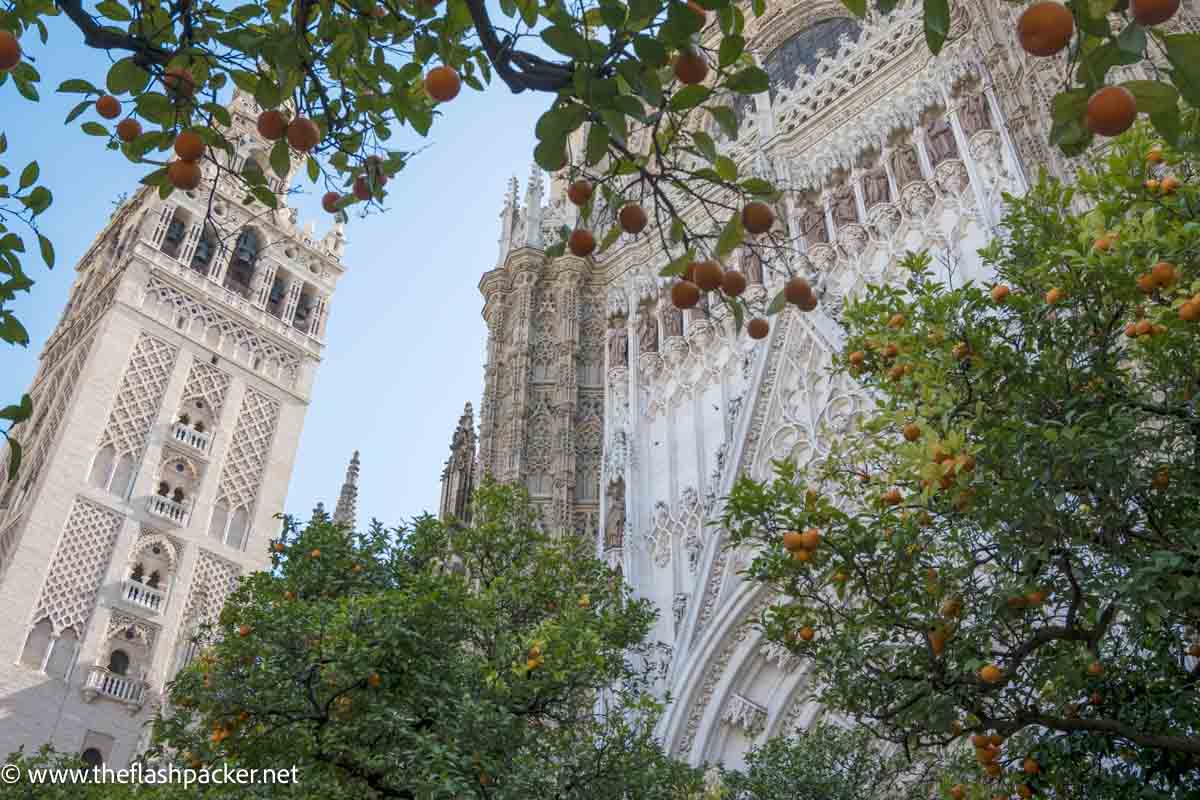
Some articles on this website contain affiliate links. This means that I may earn a small commission if you make a purchase through these links. As an Amazon Associate, I earn from qualifying purchases. Read the full disclosure here.
Is One Day in Seville Enough?
I’ll level with you. Spending one day in Seville will only allow you to scratch its surface.
That said, this is enough time to visit Seville’s show-stopping attractions, including La Giralda, the Cathedral and the Real Alcázar and dip your toe into the cultural and tapas scene for which the city is famous.
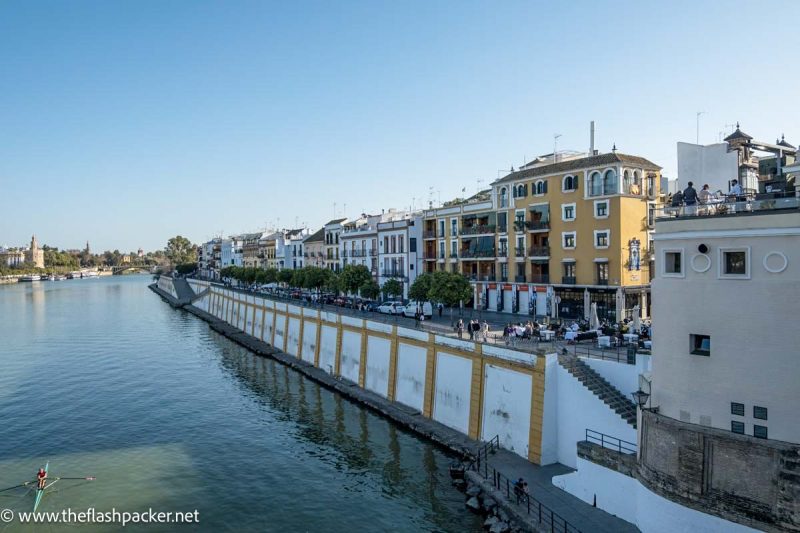
Seville Self-Guided Walking Tour + Map
My 1-Day Seville itinerary will allow you to explore the city’s history and highlights in 24 hours. It is jam-packed with wonderful things to see so wear your most comfortable shoes.
It starts with the city’s two must-see sights – Seville Cathedral and the Real Alcázar – and takes in the charming Santa Cruz barrio before heading south to the much-photographed Plaza de España. The day ends with Casa de Pilatos and a bird’s eye view of Seville from Metropol Parasol.
Here’s a map of the places included in this Seville itinerary to help you navigate the city. For an interactive map with step-by-step directions, click here or on the image.
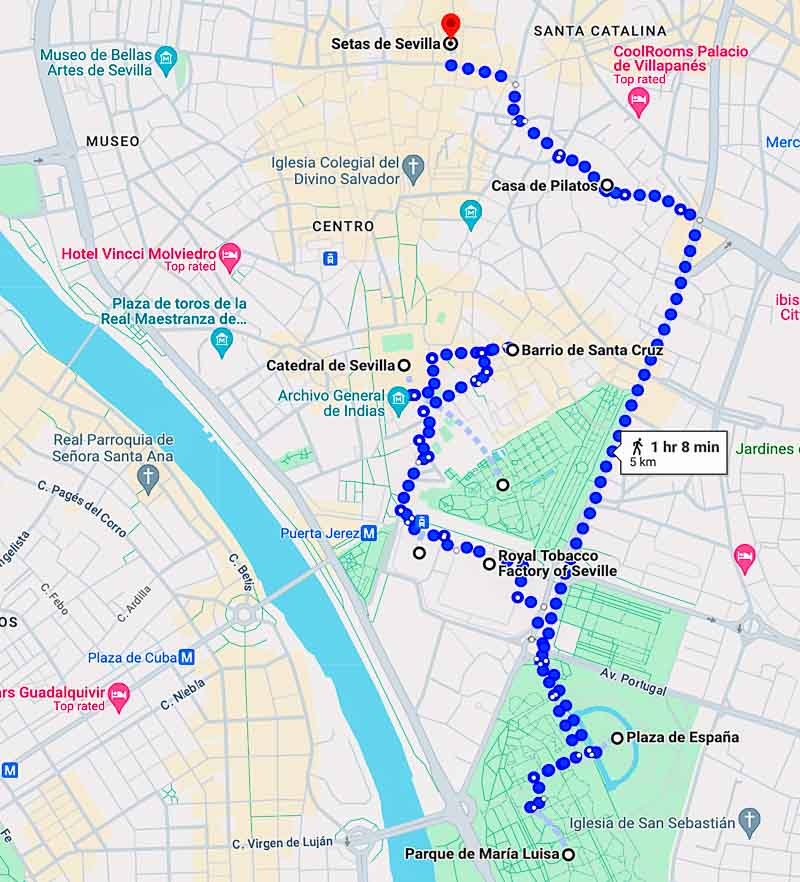
If it helps, you can use this as a self-guided walking tour of Seville. From start to finish, you will cover a distance of about 3 miles (5 km).
Suggested Seville 1-Day Itinerary
SEVILLE CATHEDRAL
Start your day in Seville at its monumental cathedral.
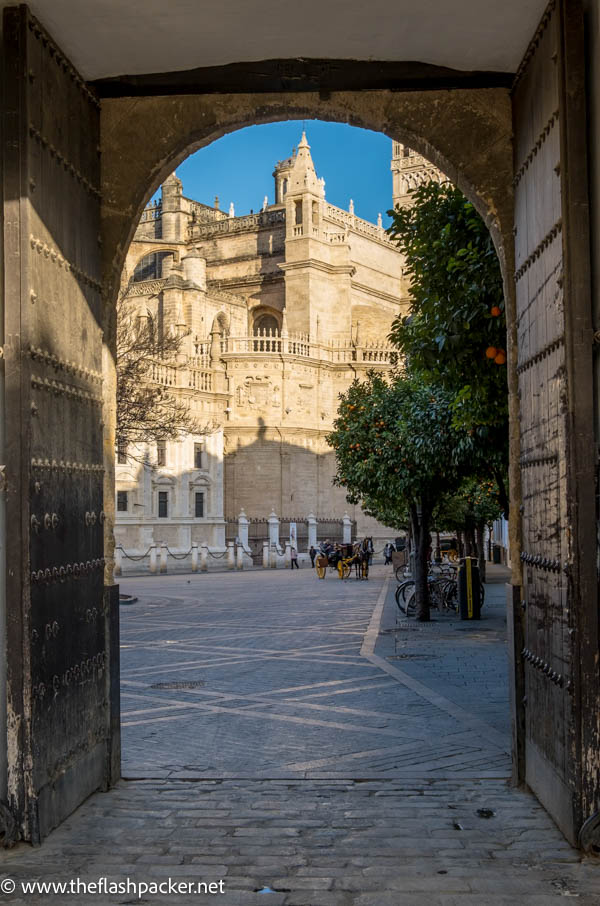
Built over the remains of a former mosque, Seville Cathedral is the third-largest church in the world after St. Peter’s in Rome and St. Paul’s Cathedral in London.
Don’t risk getting stuck in an epic queue for tickets. As this UNESCO-listed building attracts visitors in their droves, do the smart thing and buy your ticket in advance.
>>> CLICK HERE TO BUY YOUR SKIP-THE-LINE TICKET
This Gothic cathedral claims to be the last resting place of Christopher Columbus and houses Spain’s third most important collection of artworks after the Prado in Madrid and Seville’s Museo de Bellas Artes.
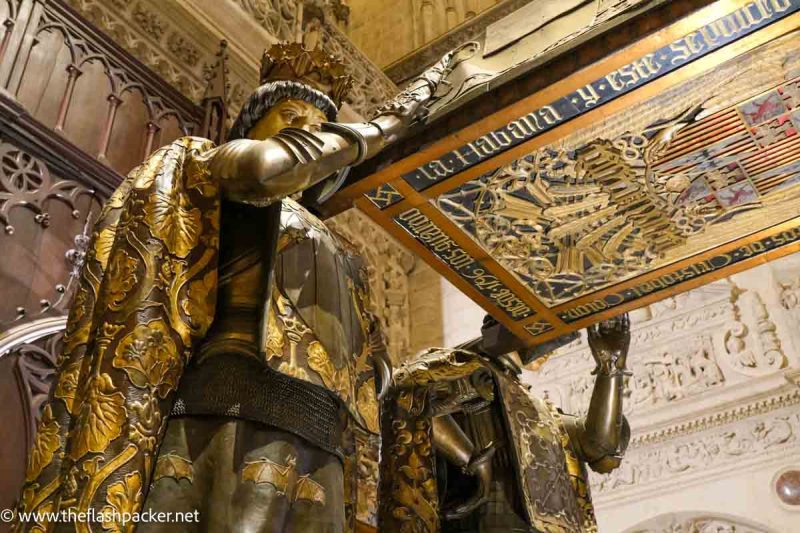
To make the most of your visit, bring a decent guidebook, buy an audio guide at the entrance or book a guided tour of the Cathedral.
>>> BOOK YOUR GUIDED TOUR WITH A SKIP-THE-LINE TICKET HERE
LA GIRALDA
Your ticket for Seville Cathedral includes admission to La Giralda, its bell tower. From the viewing platform, the views across Seville are sensational.
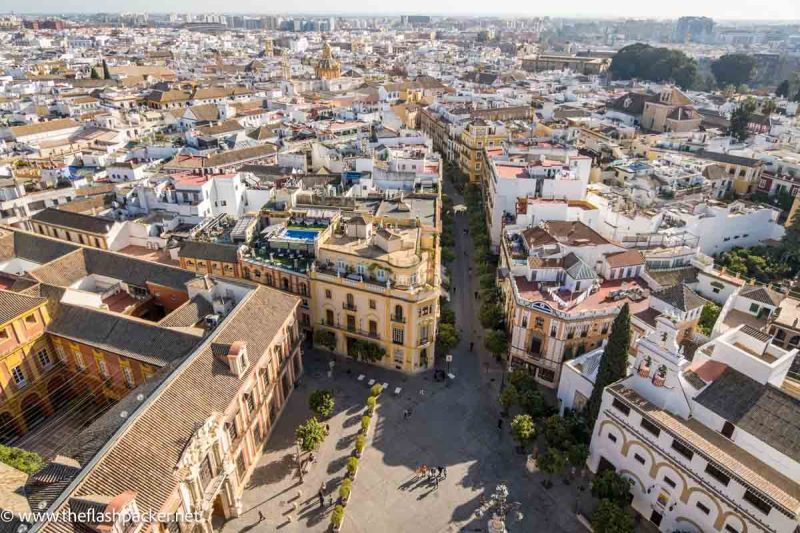
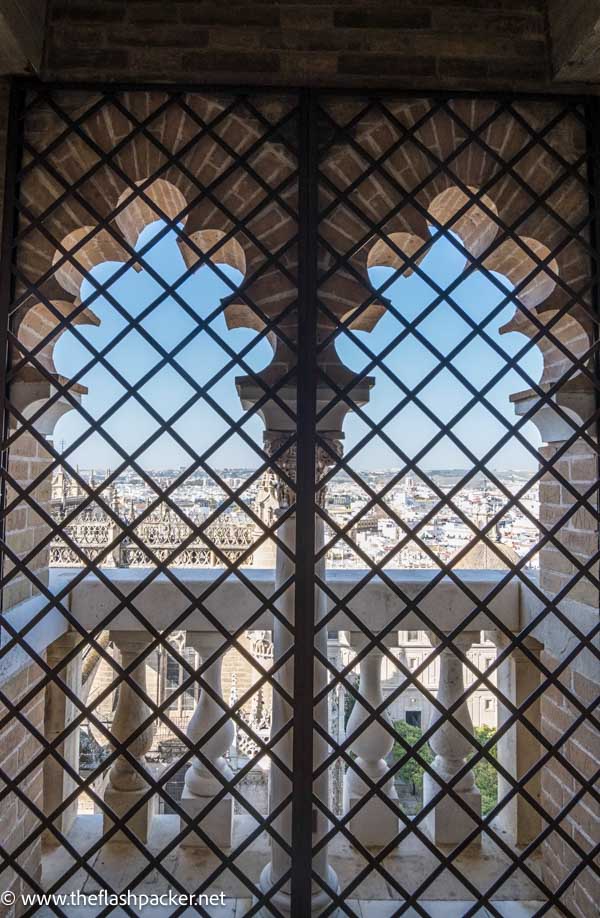
Address: Av. de la Constitución, s/n, 41004 Sevilla. The main entrance to Seville Cathedral is through Puerta del Lagarto. If you need to buy a ticket, the ticket office is at Puerta del Príncipe.
Opening hours: Open daily. Check opening hours here.
Ticket price: Entrance fee applies.
ROYAL ALCÁZAR OF SEVILLE
Built for the Christian king Peter of Castille, the UNESCO World Heritage site of the Real Alcázar of Seville is one of the most stunning royal palaces in Europe.
The beautiful Patio de las Doncellas features elaborate stucco work, azulejos (tiles) and wooden doors and was the hub of palace life. Nearby, the Salon de Embajadores is renowned for its domed cedarwood ceiling, horseshoe arcades and Mudéjar tiles.
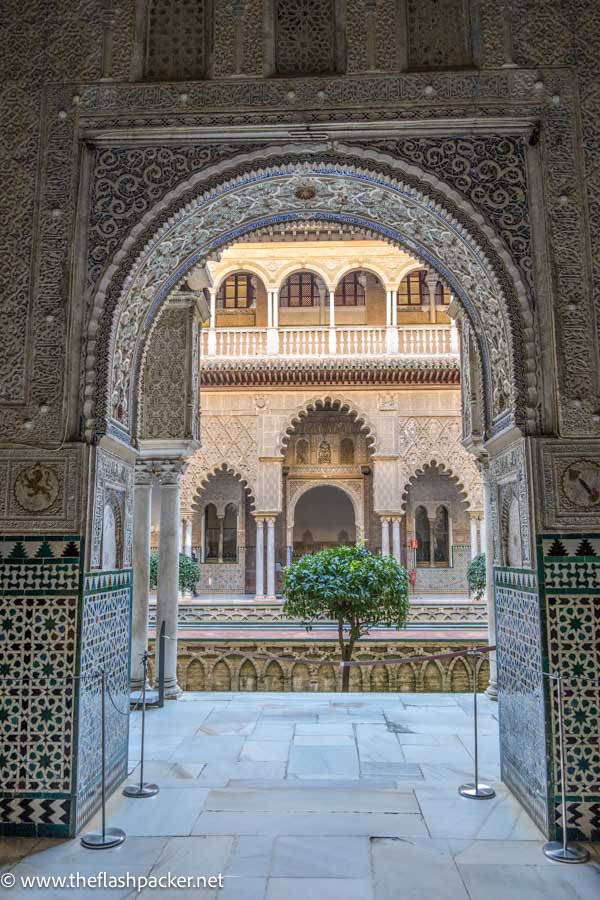
If that’s not enough, the rambling and eclectic gardens of the Real Alcázar feature tinkling fountains, still ponds, Renaissance arches and lots of orange and palm trees.
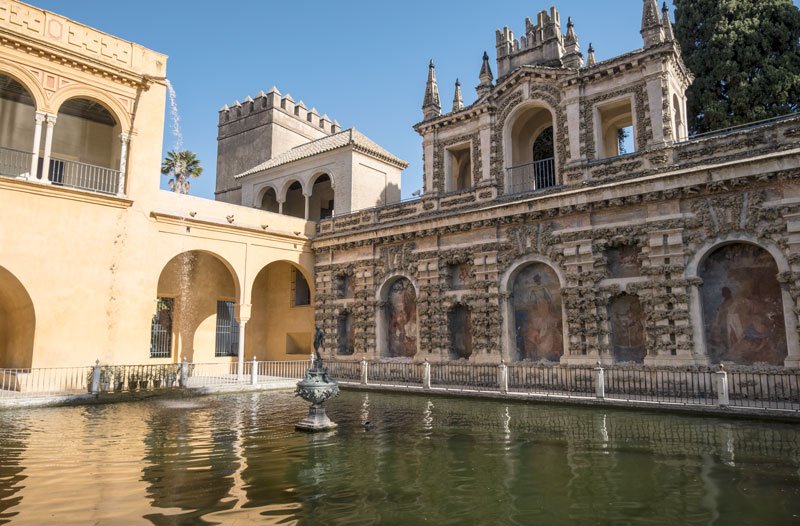
Address: Patio de Banderas, 41004 Seville
Opening hours: Open daily except for January 1st, January 6th, Good Friday and Christmas Day. Opening hours are seasonal.
Ticket price: Entrance fee applies.
WALK AROUND BARRIO SANTA CRUZ
The Cathedral and Royal Alcazar are located in Barrio Santa Cruz. Take half an hour or so to explore this historic Jewish quarter.
This maze of narrow cobblestone streets and hidden patios oozes charm. Just add the scent of oranges.
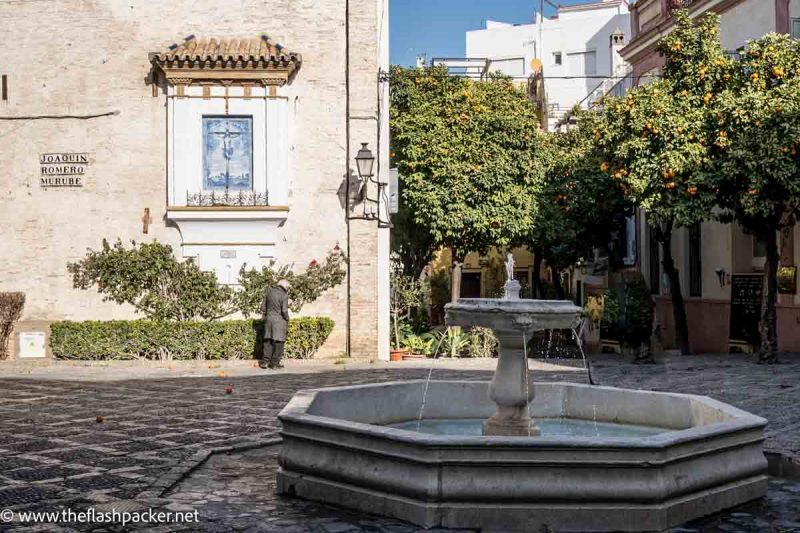
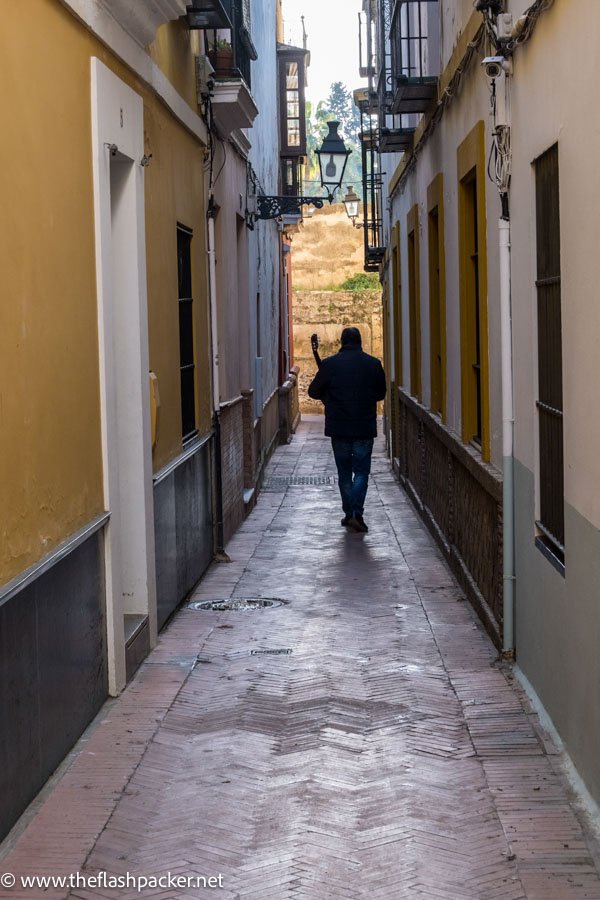
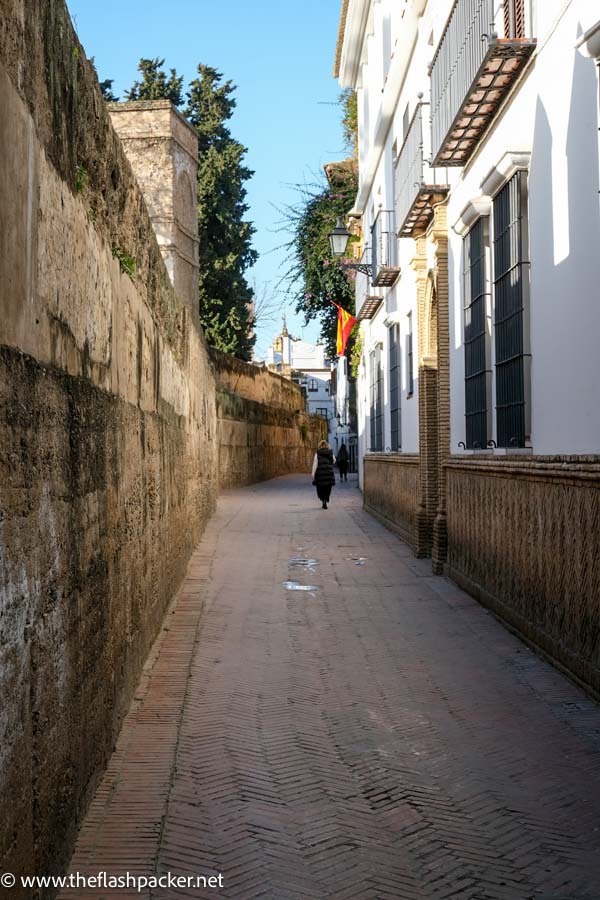
HOTEL ALFONSO XIII
Hotel Alfonso XIII is the swankiest hotel in town and was built to house visitors to the 1929 Ibero-American Exposition. The hotel’s collonaded interior patio is open to non-guests for the price of a drink.
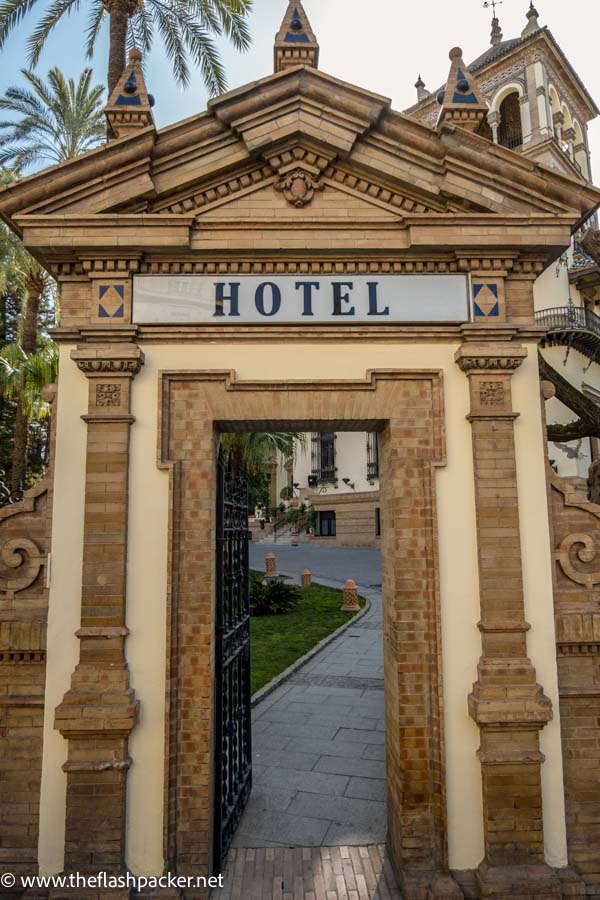
REAL FÁBRICA DE TABACOS (UNIVERSIDAD)
Just behind Hotel Alfonso XIII is the largest building in Spain after El Escorial in Madrid.
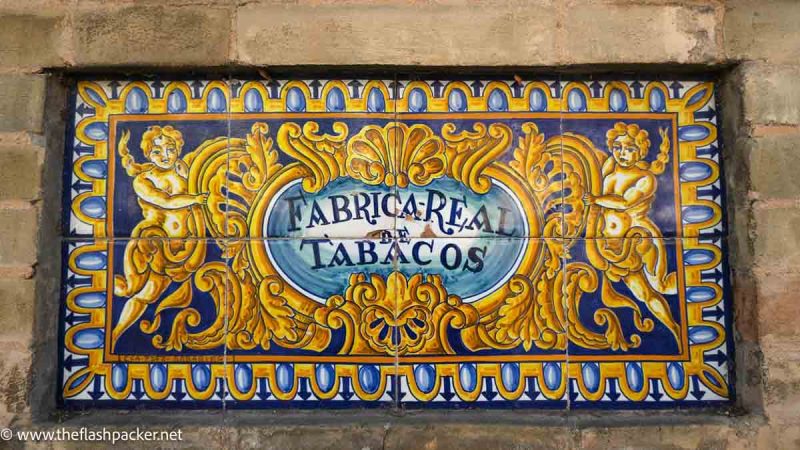
Back in the day, three-quarters of Europe’s cigars were manufactured at the Real Fábrica de Tabacos. The Tobacco Factory is now part of Seville University.
PLAZA DE ESPAÑA
Plaza de España is one of Seville’s most recognisable landmarks.
This outrageously flamboyant semi-circular plaza is fronted by a collonaded building with 48 alcoves decorated with vibrant tiles. Each of these alcoves represents a Spanish province and a moment in history.
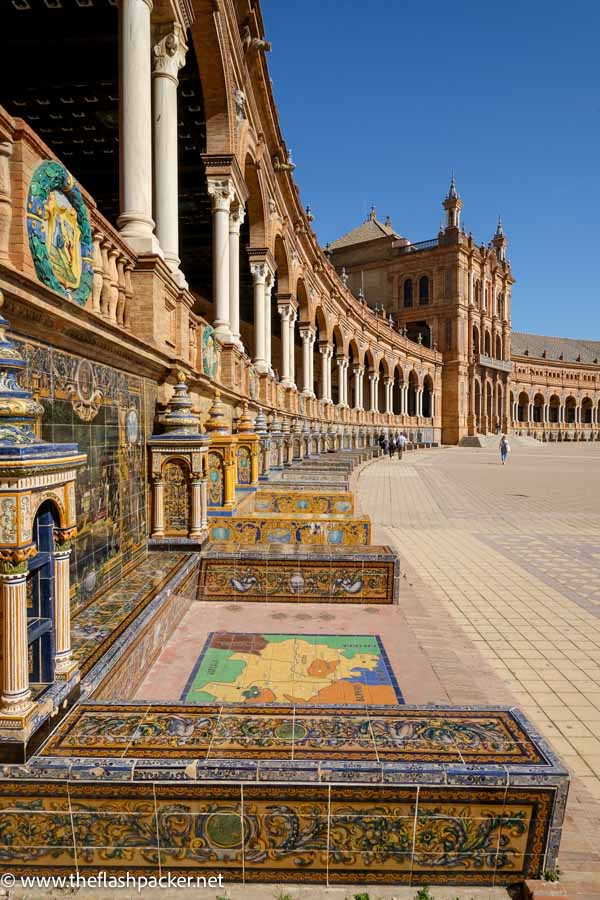
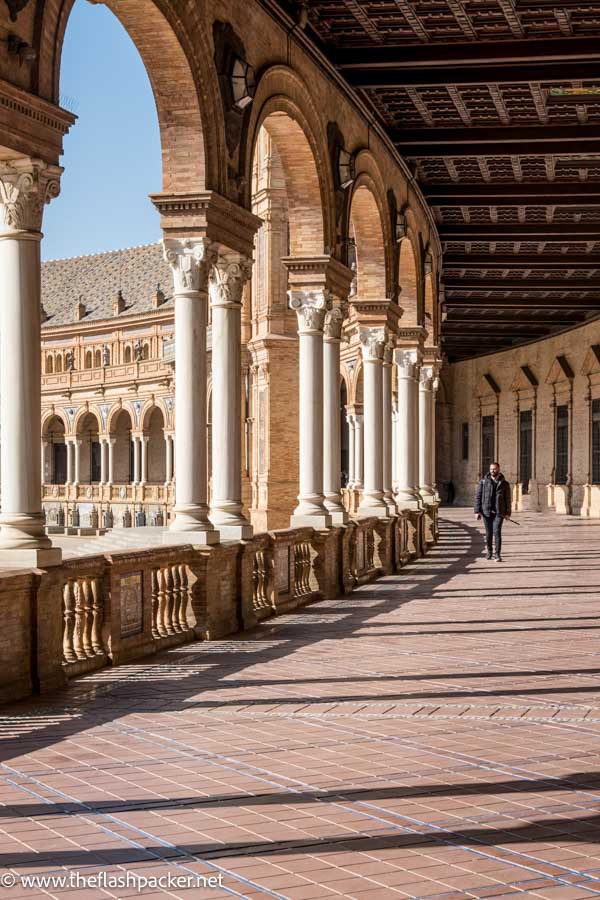
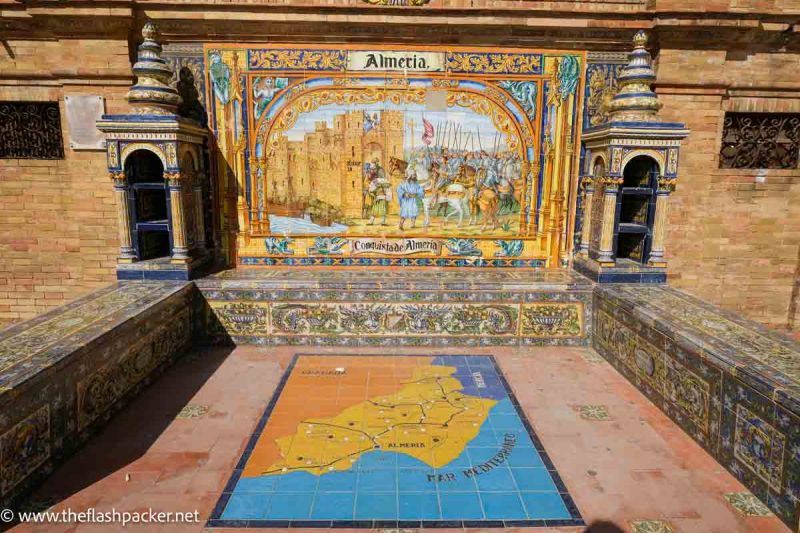
Following the curve of the building is a canal that is crossed by a series of tiled footbridges. A spectacular fountain designed by Vicente Traver takes centre stage in this massive plaza.
PARQUE MARIA LUISA
Parque Maria Luisa is adjacent to Plaza de España.
Featuring tinkling fountains, Islamic-style pools, tree-shaded avenues and sunbathing birds this leafy retreat is Seville’s green lung.
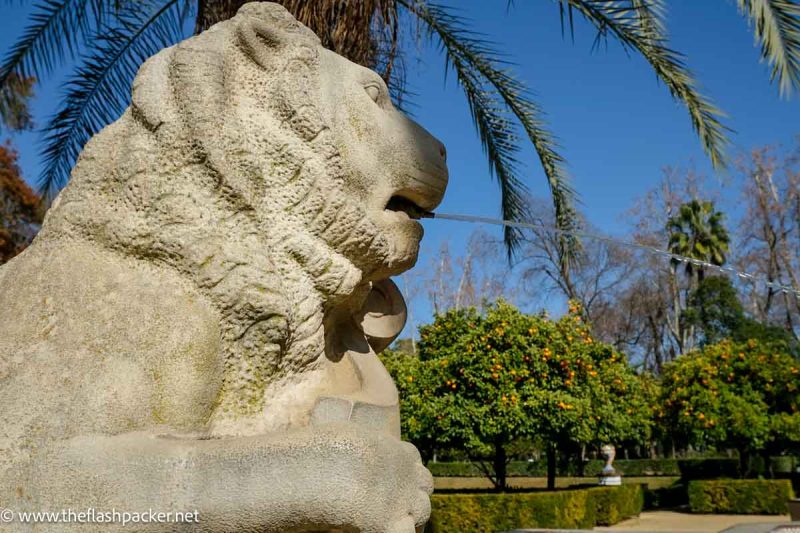
CASA DE PILATOS
This 16th-century palace, built for Don Fadrique, the first Marquess of Tarifa, is unmissable. It features a fabulous blend of Spanish Mudéjar and Renaissance architecture and is decorated with vibrant azulejos throughout.
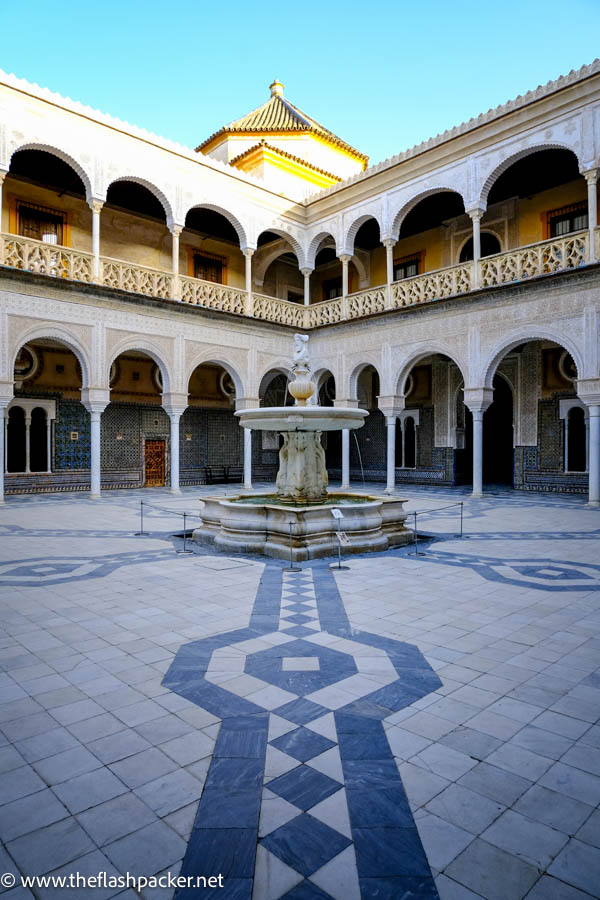
Casa de Pilatos’s main patio was used as a filming location for David Lean’s epic masterpiece Lawrence of Arabia (1962).
Address: Pl. de Pilatos
Opening hours: Open daily from 9 am to 6 pm
Ticket price: Entrance fee applies. Scan the QR code on your phone at the entrance for a free audio guide. There is an extra charge to take a guided tour of the upper floors.
METROPOL PARASOL (LAS SETAS)
From Casa de Pilatos, it’s a ten-minute walk to a newer addition to Seville’s urban landscape: the Metropol Parasol. Also known as Las Setas (The Mushrooms), it is built with 3,500 pieces of Finnish pine and is the largest wooden structure in the world.
Take the lift to the serpentine pathway that winds its way across the roof of the structure. Whilst it doesn’t offer the best views in town, it’s a fascinating structure.
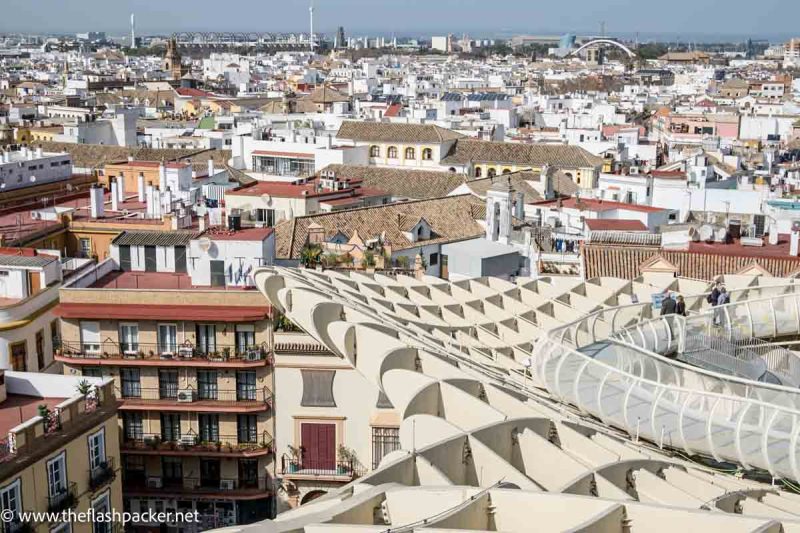
Underneath the Metropol Parasol, you’ll find a food market and The Antiquarium, which houses the Roman, Visigoth and Islamic remains unearthed during its construction.
Address: Pl. de la Encarnación, 37
Opening hours: Open daily. Check the website for seasonal opening hours.
Ticket price: Entrance fee applies.
CATCH A FLAMENCO SHOW
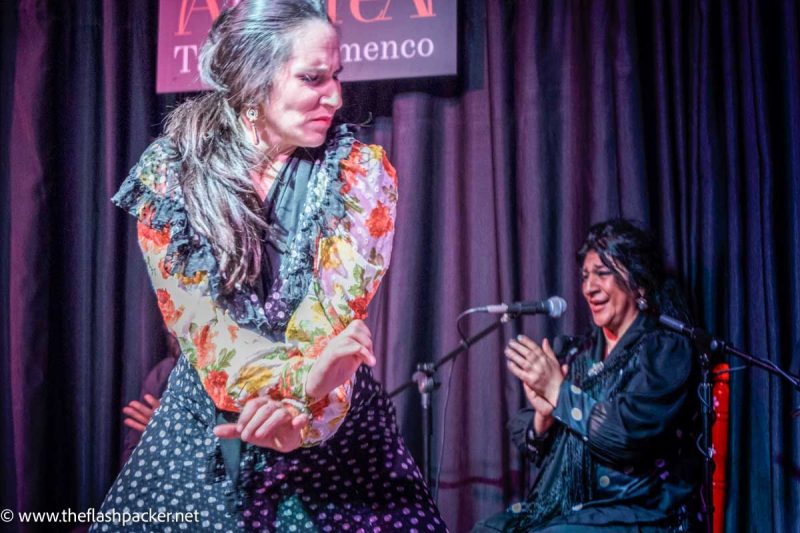
If you are staying in Seville for the evening, try to catch a flamenco show.
This traditional art form is one of the things Spain is best known for and perfectly captures Andalusia’s spirit. I went to a flamenco performance in Granada and was utterly captivated.
There are countless tablaos (flamenco venues) in Seville, but here are two that are highly rated by other travellers.
Casa de la Memoria flamenco show
This one-hour performance is held in an intimate theatre that dates back to the 15th Century.
>>> CLICK HERE TO BOOK YOUR TICKET
La Cantaora Flamenco Show with dinner
If you want to combine a flamenco show with food and drinks, book a ticket for a show at La Cantaora, which focuses on the purity and roots of gipsy flamenco.
>>> CLICK HERE TO BOOK YOUR TICKET
Best Time to Visit Seville
The high season in Seville is between February and June when temperatures are balmy and the days are long.
I last visited Seville in February. Although it was chilly in the mornings, the thermometer hit the low 20s in the afternoon and the skies were clear and blue.
The city’s orange trees are also groaning with fruit in February (March is the best month to visit Seville for orange blossom).
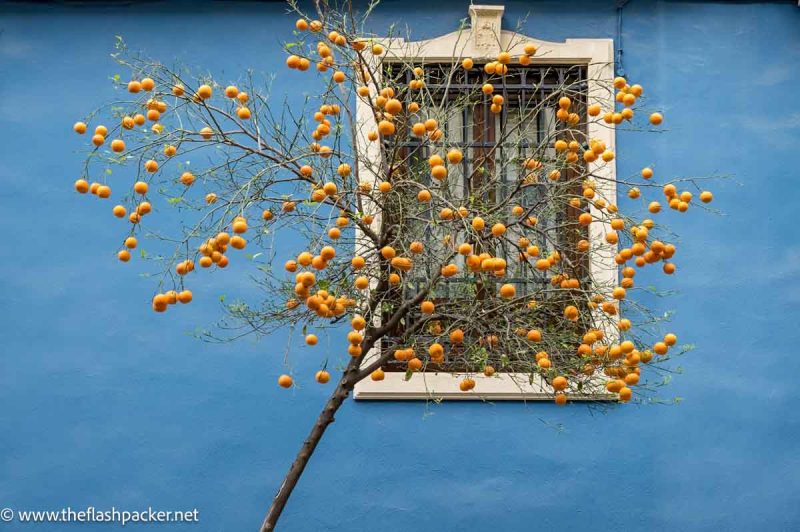
In the shoulder season (October – January), prices are lower and visitors are fewer. Although temperatures are mild, it can rain.
Avoid visiting Seville between July and September. I was there in August / September and it was brutally hot with temperatures hitting the high 30s. Learn from my mistake.
Getting There
Getting to Seville by train
Thanks to Spain’s AVE high-speed trains, arriving in Seville by rail is super easy. Book in advance for the best fares.
Seville’s Santa Justa station is located northeast of the city centre and serves most of the main routes. There is also a second station – San Bernardo – located southeast of the city centre.
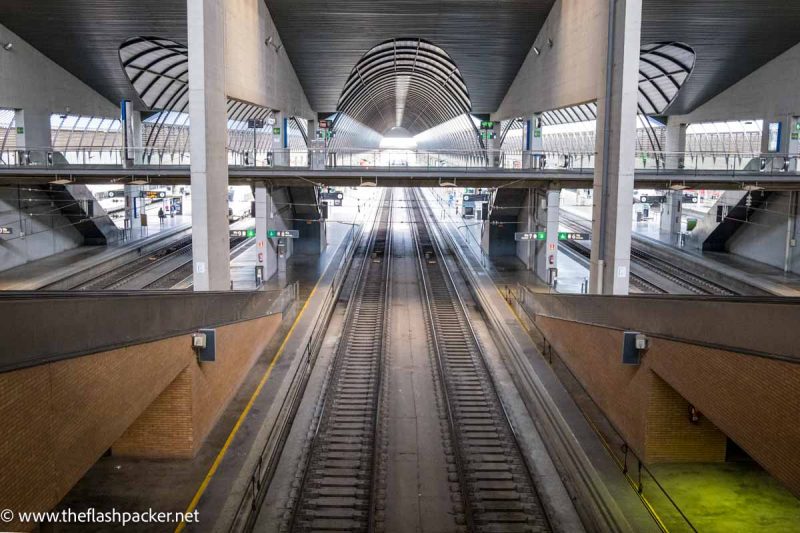
Frequent trains run from Madrid (2.5 hours) and Malaga (from 2 hours), and less frequently from Barcelona (5.5 hours) and Valencia (3.5 hours). Book in advance for the best fares.
The cheapest way of booking train tickets in Spain is through Renfe, their national rail operator. However, the Renfe website doesn’t always play nice (on more than one occasion it refused to recognise major destinations for me). If this happens, book via Omio. Although there’s a small booking fee attached, it’s a clear booking engine and hassle-free.
Getting to Seville by bus
Seville’s Plaza de Armas Bus Station serves routes to Huelva and Costa de la Luz in Andalucia, and to other destinations in Spain, including Madrid, Barcelona, Valencia, Alicante, Mérida, Asturias and Galicia. There are also services to Portugal and France
Prado de San Sebastian Bus Station handles long-distance routes to Barcelona, Murcia and Cartagena, as well as other destinations in Andalusia.
Find more information about bus services to Seville here.
Getting Around
If you stick with this Seville itinerary, you shouldn’t need to use public transport. The city’s main attractions are scattered across a very walkable area.
But if you are feeling weary, hail a taxi or rent a bike through SEVici, the city’s bike-hire scheme. There is a reported 120 km of cycle lanes in Seville.
Seville also has an extensive bus network. The circular buses, C3 and C4, follow the ring road around the old city centre. The C5 bus takes a circular route inside the centre.
The city also has a tram and metro system. More information on Seville’s public transport here.
There is also the inevitable hop-on-hop-off (HOHO) bus service.
>>> CLICK HERE TO BUY YOUR HOHO TICKET
Where to Stay in Seville
If you are staying overnight in Seville, base yourself in the Old Town area around the Cathedral and El Arenal district. You will be close to the city’s main attractions, there is plenty of accommodation to suit all budgets and there are lots of restaurants and bars from which to choose.
Here are my recommendations:
Apartment – Céntriko Apartments, Quintero 40
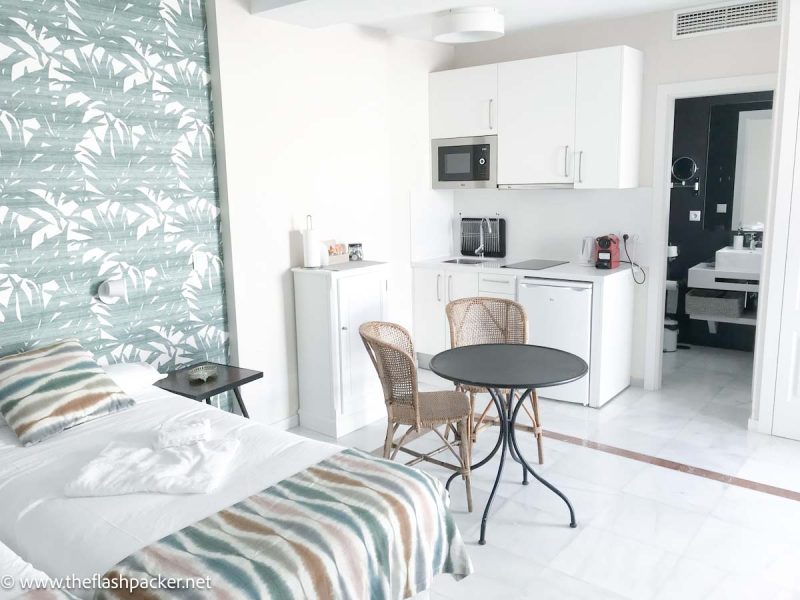
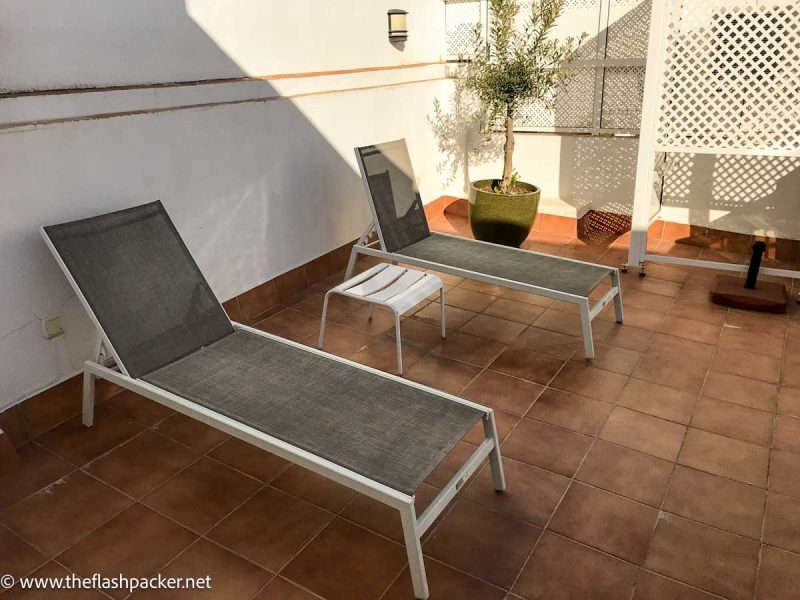
I stayed in this fabulous rooftop apartment tucked in a quiet side street a stone’s throw from the cathedral. It was great value for what it offered, which included a private terrace with Giralda views and laundry facilities.
Address: 40 C/ Álvarez Quintero
>>> CLICK HERE TO CHECK RATES & BOOK
Mid-range hotel – Hotel Simon
This was where I stayed on my first visit to Seville. This modest hotel is in an 18th Century mansion, a 3-minute walk from the cathedral and features a beautiful central courtyard.
Address: C/ García de Vinuesa, 19,
>>> CLICK HERE TO CHECK RATES & BOOK
Luxury hotel – Radisson Collection Hotel, Magdalena Plaza
This new 5-star hotel is a 10-minute walk north of Seville Cathedral and features a rooftop swimming pool.
Address: Plaza de la Magdalena 1
>>> CLICK HERE TO CHECK RATES & BOOK
Where to Eat
One thing that Seville is not short of is bars and restaurants. Here are a few places that I tried and liked.
This traditional bodega opposite Hotel Simon serves an extensive range of wines and sherries, and possibly the largest potato tortilla in the world. I was a regular customer on my first visit to Seville many moons ago and was delighted it was still in business on my last visit.
Address: C/ García de Vinuesa 20
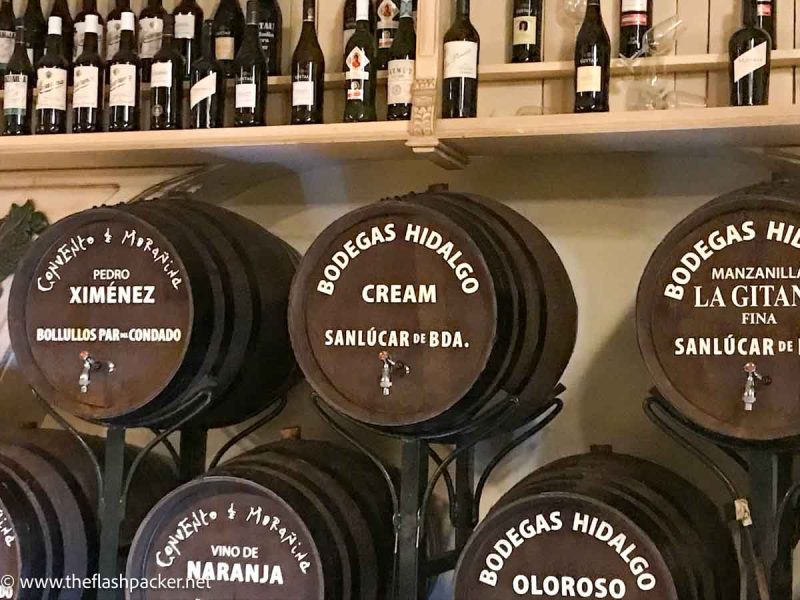
Grab a seat on the outside terrace of this friendly restaurant near the cathedral and Alcázar and tuck into a plate of fried fish accompanied by roasted vegetables with goat’s cheese.
Address: C/ Francos, 42
I’d go back here solely for the sublime langoustines wrapped in bacon.
Address: C/ Adriano, 20
Another friendly Seville dining option, located close to Iglesia del Salvador. Try the hake and prawn fritters.
Address: C/ Alvarez Quintero 3 Salvador Square
Is Seville Safe for Solo Travellers?
Spain is not only one of the easiest places to travel alone in Europe, but it is also one of the best solo travel destinations in the world. This is the case even if you are travelling alone for the first time.
This Iberian country has a rich history, a vibrant cultural scene and a well-developed travel infrastructure. This is never so true when it comes to Seville.
Foremost in the minds of female solo travellers is safety when travelling alone. Seville’s Old Town is relaxed with locals and visitors enjoying its attractions, bars and restaurants. Even after dark on weekdays, it felt safe.
However, in common with other major cities, Seville has gained a reputation for pickpockets, especially in popular tourist areas and transport hubs. Remain vigilant, keep your belongings close to you and use your hotel safe to store valuables.
Ready to spend a day in Seville?
I hope that this itinerary helps you have a wonderful visit.
If you would like more help with planning your stay, take a look at my comprehensive guide to Seville Cathedral and my top tips for visiting the Real Alcázar of Seville. For longer stays, I’ve written a 3-day Seville itinerary.
Finally, if you are travelling to other places in Southern Spain, here are some of my other guides:
- A Perfect 2 Days in Granada: Itinerary for First-Timers
- 15 Essential Tips for Visiting the Alhambra, Granada
- Top 10 Things to Do in Córdoba in One Day: Spain’s Historic Jewel
- A Perfect Weekend in Málaga, Spain: 2-Day Itinerary & Best Things to Do
- One Day in Málaga: A Free Self-Guided Walking Tour

About Bridget
Bridget Coleman has been a passionate traveller for more than 30 years. She has visited 70+ countries, most as a solo traveller.
Articles on this site reflect her first-hand experiences.
To get in touch, email her at hello@theflashpacker.net or follow her on social media.
